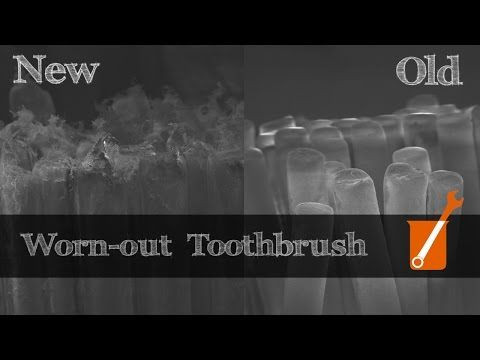After You Brush Your Teeth For 3 Months, This Is What Your Toothbrush Looks Like: Why You Need To Replace An Old Toothbrush

Most people brush their teeth twice a day to maintain proper hygiene, whiten smiles, and help keep us out of the dentist’s chair more than a regular checkup. All that work wears out our toothbrushes and under a microscope, a three-month old brush looks pretty useless. Each week, Google engineer Ben Krasnow videotapes his workshop for a sneak peek demonstration of how different applications of science and technology work. Most recently, Krasnow took viewers behind the lens of his wide array of microscopes to reveal what all that brushing does day-in and day-out.
A new toothbrush works just fine with ridges to pull the plaque and food off the surface of the teeth and out of the crevices between the gums. But after just a few months the toothbrush is smooth, worn down by the abrasive effects of the toothpaste, rendering it nearly ineffective for proper dental hygiene.
According to the American Dental Association, consumers should replace their toothbrushes every three- to- four months or sooner once the bristles become frayed with use. In addition to the toothbrush wear down, it’s important to throw out an old toothbrush because of the billions of potentially harmful microbes that toothbrushes can carry on them. Thoroughly rinsing the toothbrush and allowing it to air dry is a basic and hygenic way to maintain a toothbrush until it’s ready to be tossed in the trash.
Published by Medicaldaily.com



























